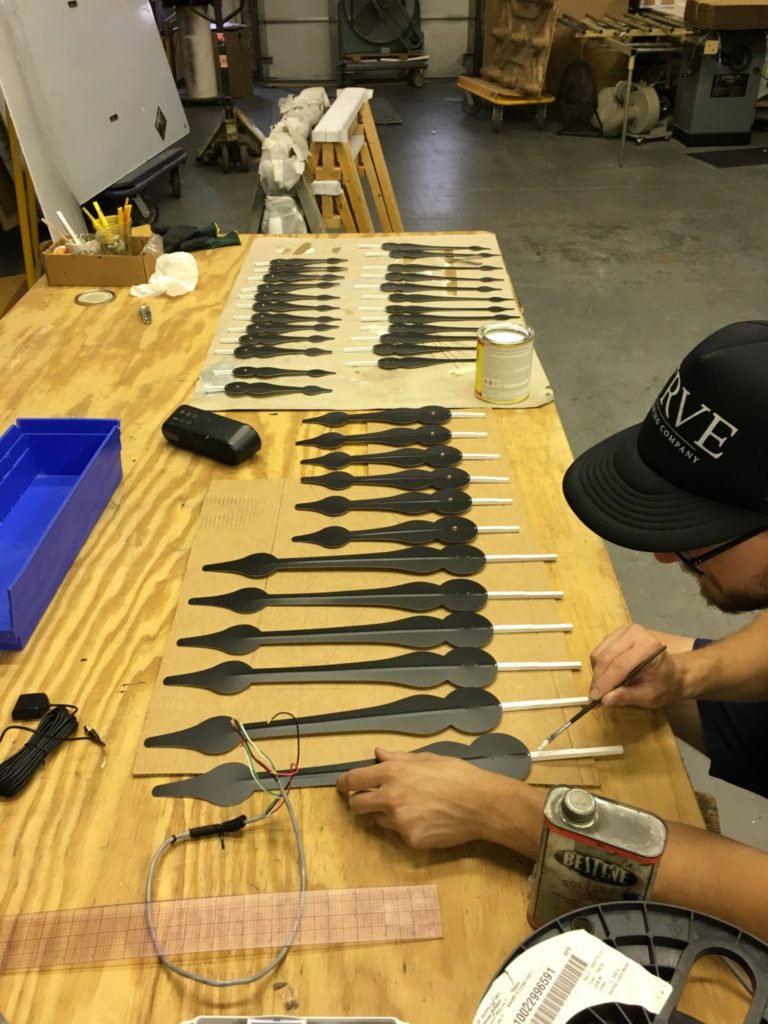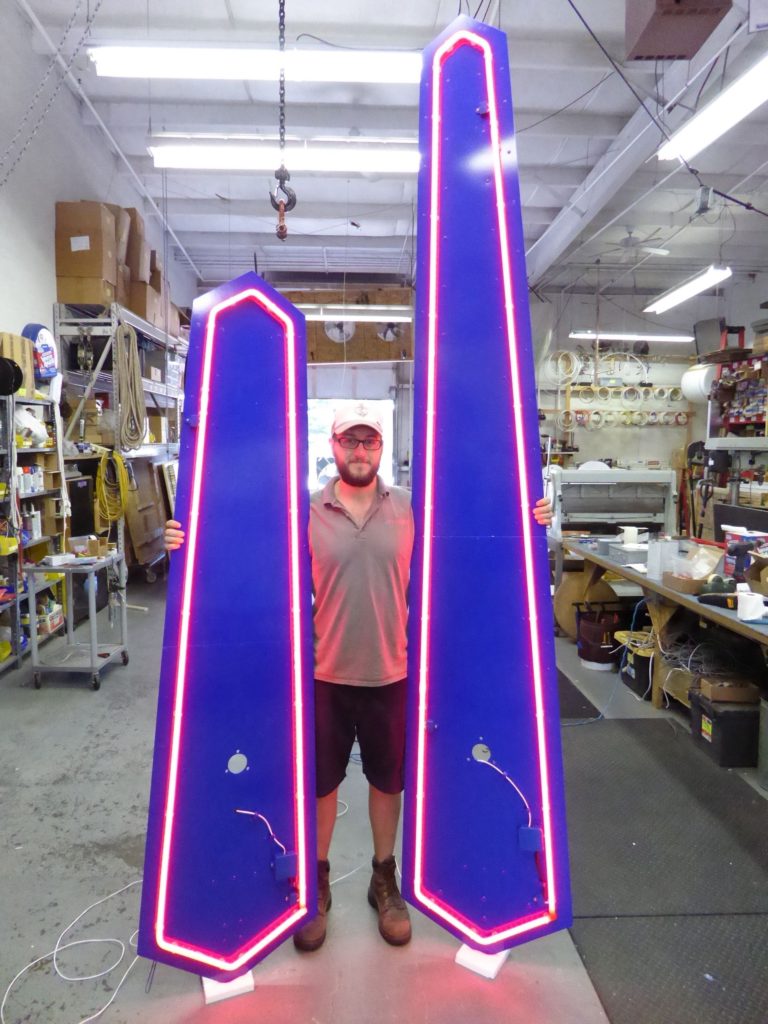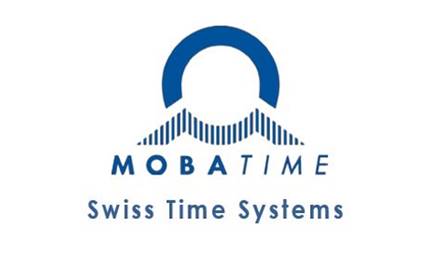or, working on hands

As was mused upon in our article, “From the Clockmaker’s Bench”, one might say that modern clocks and their construction is a mixture of old and new. The production and preparation of clock hands is one area in which this is very much exemplified.
If you picture a clock in your mind’s eye, you might see a long hand and a short hand. These are referred to as, respectively, the minute hand and the hour hand. Looking closer at the hands, you may also notice that one end, the end pointing at the numbers and by which the time is read, is much longer than the other with respect to the center of the dial. We call the long end the ‘tip’ and the shorter end the ‘tail’. In the center of the dial is the clock movement, to which the hands are affixed.

In order to keep equal stress upon the inner workings of the clock movement, the hands must be balanced, so that the weight of the long end is equal to the short end. If you were to remove the hands of a big clock and flip them over to look at the underside, you would find a plate or block of material, such as brass, fastened to the tail. Thanks to this added ‘tail-weight’, you can (assuming it’s not too heavy) balance even a large clock hand at its center point with one finger!
You may have seen clock hands that don’t appear to have a tail, but rather end with a circular hub in the middle of the dial. How do these get balanced? Typically, this is done by attaching a brass tail rod to the underside of the hand. The tail rod is cut to such a length that the hand will be balanced, and then it is painted white to better blend in with the underlying dial.
At Lumichron, nearly every clock is custom made, and thus the sizes of hands to be balanced vary wildly. We can often be found at the workbench with a pair of clock hands resting on the balance fixture, adding bits of material to find the proper balancing weight. For a recent project, however, we were able to do a fairly sizable production of hands, of the type with tail rod weights. Hands and weights were all punched, drilled, fastened, and painted by hand, just like the old days. These hands were very similar to the type found in the four-way post clock detailed in our last article.
Next time you see a large clock, think about all the hand work that went into the hands!

